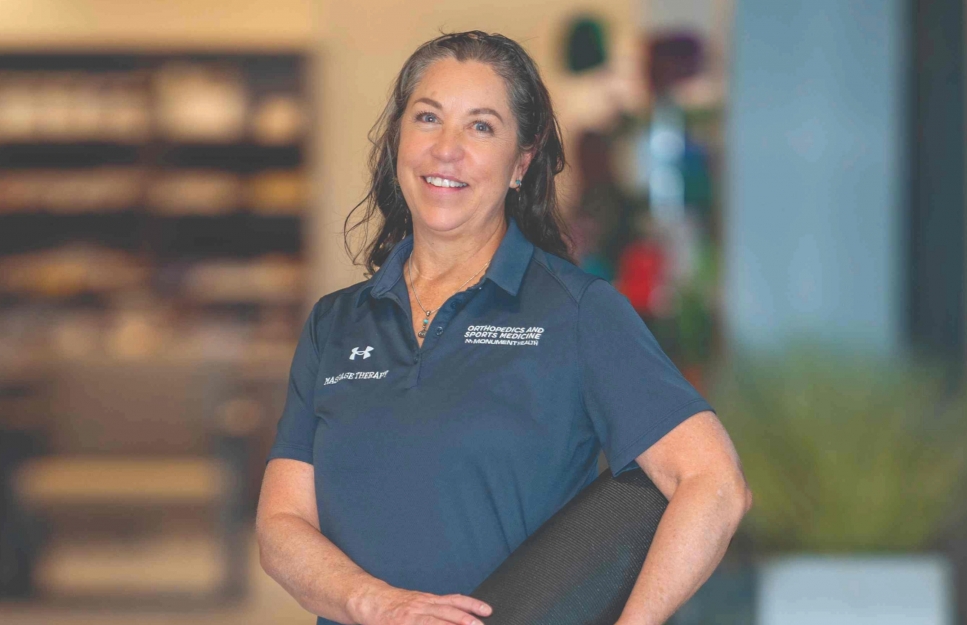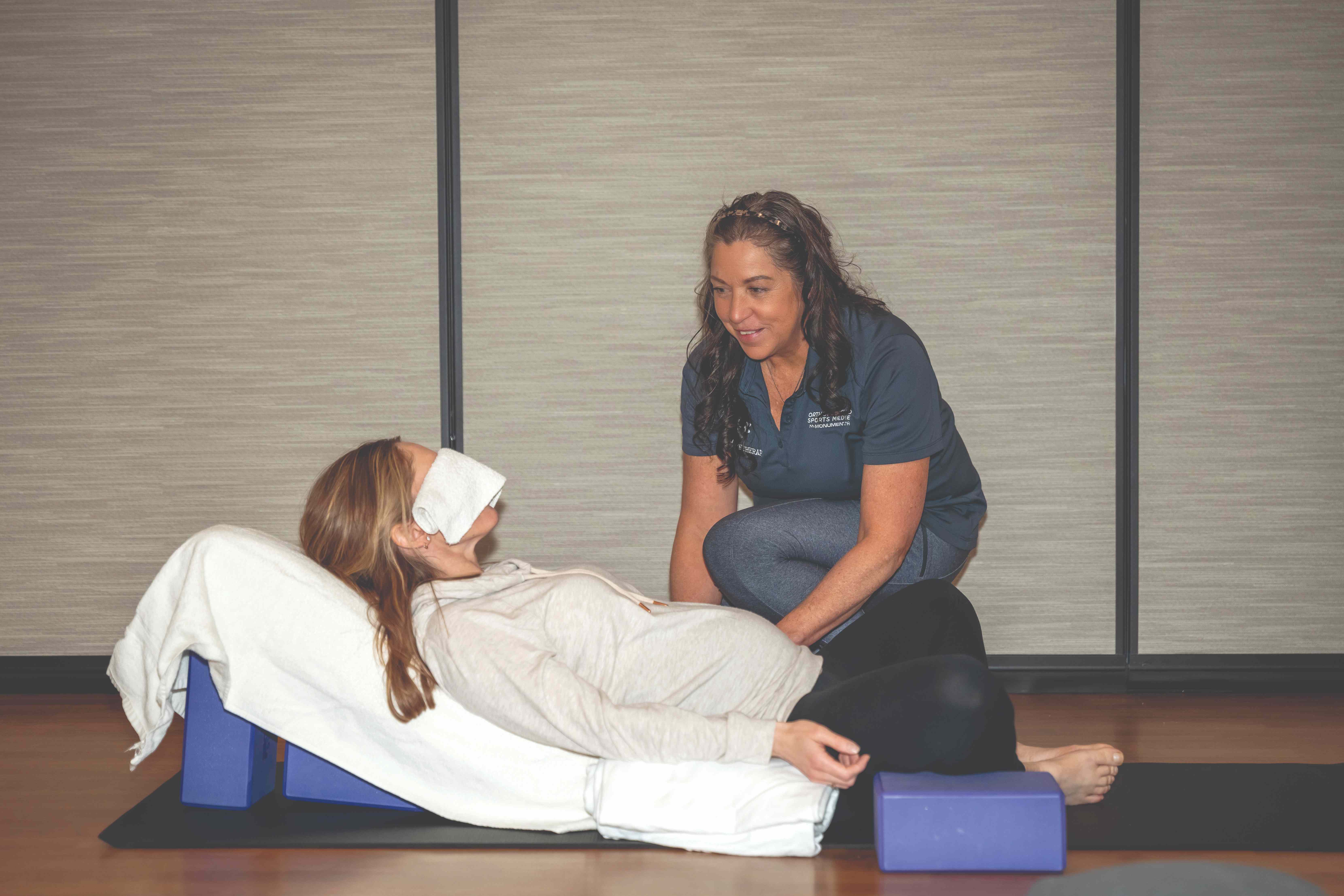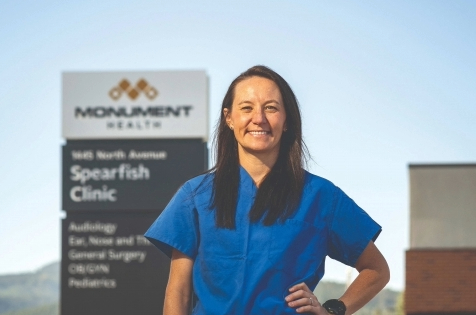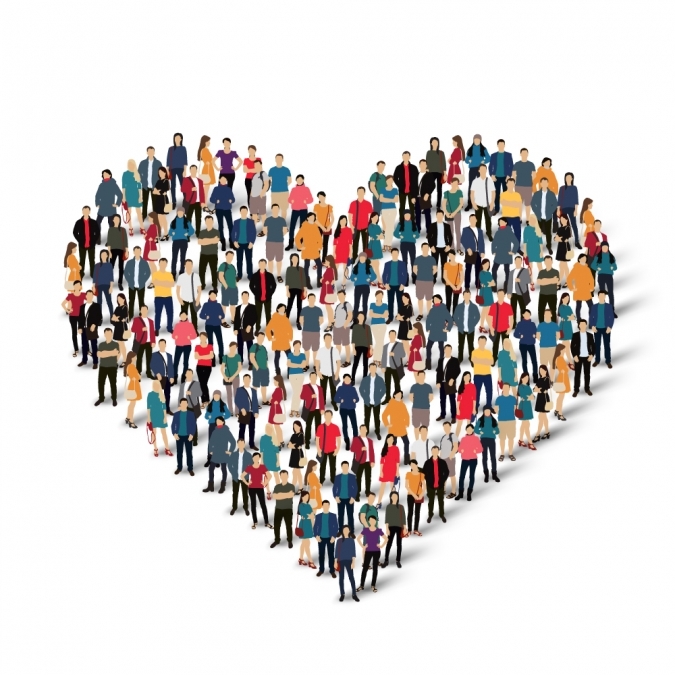There are many ways to describe Jamie Clark: licensed massage therapist, yoga instructor, kayaker, skier and camper.
While those may describe her hobbies and careers, they don’t necessarily describe her. To really understand who Jamie is, first you have to understand her quest for knowledge and her ability to touch the lives of others.
Oncology massage is growing in popularity as a complementary treatment for patients with cancer. The massage isn’t intended to treat the disease itself, but rather to help relieve cancer symptoms and ameliorate side effects of certain treatments. Despite its growing popularity, Jamie is the only massage therapist in South Dakota to be recognized by the Society for Oncology Massage as a preferred practitioner.
While it seems like a pretty specific niche, she didn’t start her career with a focus on treating cancer patients. Instead, it seems like the career chose her.
Between the yoga studio and the massage room at the Cancer Care Institute, Jamie hopes her spaces provide an opportunity for cancer patients to feel present and calm their nervous system. “These are also safe spaces for patients to express whatever they might be feeling,” she explained. “Whether they need to laugh or cry, these are spaces where they can let it out without any worry or judgment. Sometimes that’s exactly what someone needs.”
Open heart, open mind
“Right after I graduated from massage school, a client of mine said he had a friend that had a dual diagnosis of cancer and AIDS. He wanted to know if I would be willing to meet the patient. As a new graduate I was nervous, but I knew if I could just go and maybe sit with him, hold his hand and just listen, maybe that would be enough, because there is healing in that, too,” she said. “People need to be heard, touched and to feel connected.”
Jamie recalled the lessons she learned from that first client — treating people with an open heart and open mind can be just as important as massage techniques. “If I can help someone be comfortable even just for a few seconds, in their mind and in their body and just feel like they’re a whole person — even though they have this diagnosis — then I feel like I’ve become their helper.”
When Jamie first started her career, the recommendation was to not provide massage to cancer patients. The misconception, at the time, was that overstimulating the lymph system and increasing circulation in the body could cause the cancer to spread. Through her experience and certifications, Jamie has learned the safe way to massage cancer patients. She is aware of which areas of the body to avoid, and the pressure used is modified to ensure comfort.
“What we’ve learned in the last few years is that massage can be adjusted to meet the needs of each individual client. I always discuss their cancer journey with them before we begin.”
“If I can help someone be comfortable even just for a few seconds, in their mind and in their body and just feel like they’re a whole person — even though they have this diagnosis — then I feel like I’ve become their helper.”
JAMIE CLARK, ON HELPING PATIENTS UNDERGOING DIFFICULT DIAGNOSES
Considering compassion
Jamie considers her time with her clients in many ways. The more she understands their diagnosis, the better she can adjust her approach to increase relaxation and comfort to clients.
“The cancer journey is scary — it can be really hard and isolating for people.” Jamie realized that after a diagnosis, some people find friends or loved ones who don't know what to do or say, so they disappear from their lives. Jamie works to create a safe environment for each client to share as much or as little as they need. “Some days we laugh together until we cry together. Other days, clients and I will cry together, until we laugh. It doesn’t make everything better, but I can bring them just a little bit of joy.”
Being compassionate is part of who Jamie is, but she learned just how beneficial that compassion can be for patients facing significant challenges. “My mother had colon cancer, and when she got really sick and could barely speak we shared a mantra which was, ‘I’m okay today,’ and she would make the symbol of a heart with her hands.” Jamie also learned firsthand just how meaningful touch can be while she was there for her mom. “Sometimes she would ask me just to hold her feet — when neuropathy set in, that light touch might be all she could handle. Other times she asked me to rub her neck, shoulder, arms or hands. I really directed my attention wherever she needed it.”
Never alone
Jamie and the Cancer Care Institute team want to relay this important message to the people facing a cancer diagnosis: you’re not alone. There are resources and support systems in place to care for cancer patients. And, treating yourself to a massage may relieve more than just sore muscles.
“I’ve been doing this for over 20 years. I’m now treating more of the heart and the mind, not just the body. It’s not as hard physically, but I’m not gonna lie, some days, it’s hard
on my heart,” Jamie says. “But helping people feel better? It’s well worth the effort.”
The massage needs and physical abilities of cancer patients receiving treatment can be drastically different, so working with these patients requires specialized skills and training. On her quest to continue to learn, grow and improve her skills to care for her clients, Jamie is preparing for an additional yoga certification specifically to help instructors provide classes to those with cancer.
Written by Stephany Chalberg
Photos by Bob Slocum




